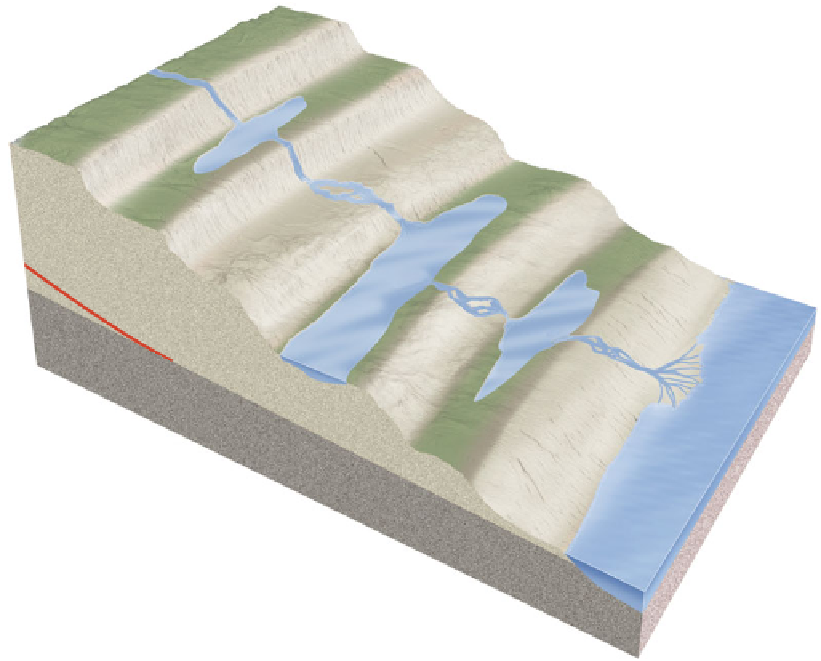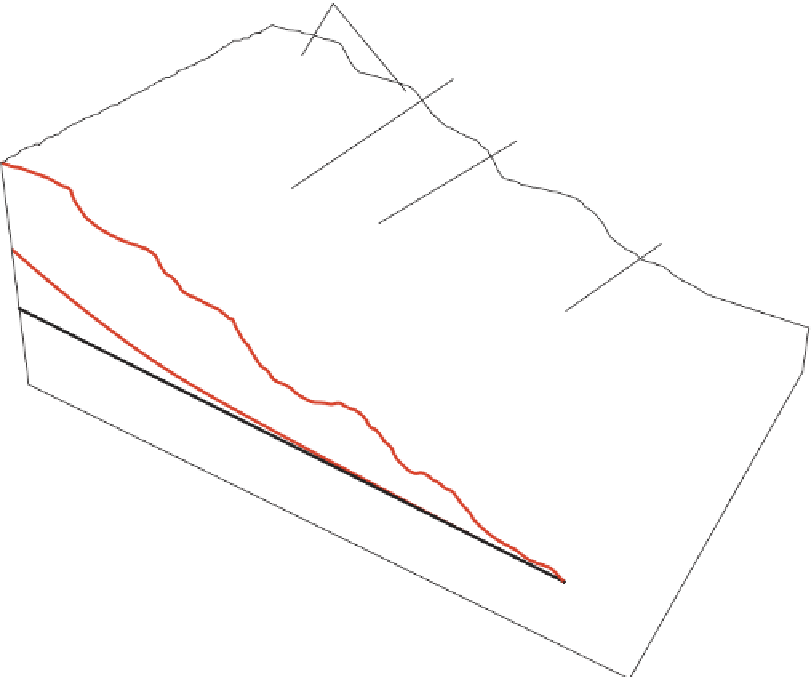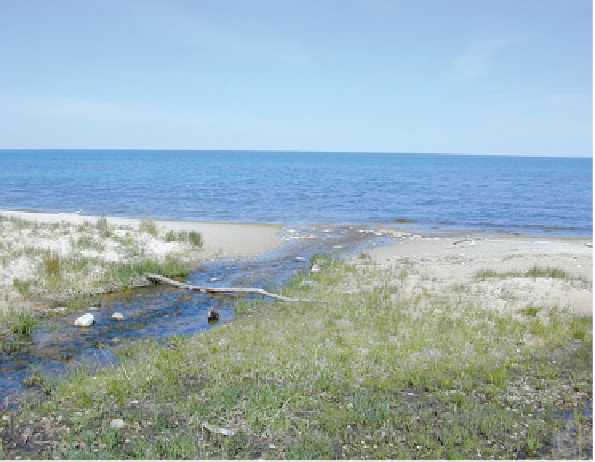Geoscience Reference
In-Depth Information
Knickpoints
Waterfall
(very steep gradient)
Rapids
(steep gradient)
Initial profile
after uplift
Smoother
profile
Lake
(shallow gradient)
Graded
longitudinal
profile
Ocean
Base level
Figure 16.20 Evolution of a graded stream profile.
(a) Following landscape uplift, the stream profile is very
uneven. With time, however, it gradually smooths into
an ideal longitudinal profile. From this point forward, the
gradient of the channel progressively lowers. (b) A major
control of stream behavior is base level, which is the point
at which a stream flows into the ocean, lake, or another
stream. This example shows the location where Antrim
Creek flows into Lake Michigan. In other words, Lake
Michigan is base level for Antrim Creek.
Now examine more closely how a stream might evolve to
reach a graded condition. Figure 16.20a shows several stages
in the development of a hypothetical landscape. The diagram
traces the evolution of a stream's
longitudinal profile
(or simply
“profile”), which shows the change in the stream's gradient
along its length. The beginning point for this developmental se-
quence could be a period of rapid uplift that elevated the upper
part of the basin. Conversely, this sequence could be triggered
by a major climate shift or a major environmental change such
as the uncovering of the landscape following deglaciation. For
simplicity, imagine that the sequence begins with some kind of
Longitudinal profile
A graph that illustrates the change in
stream gradient in cross section along a stream from its source









